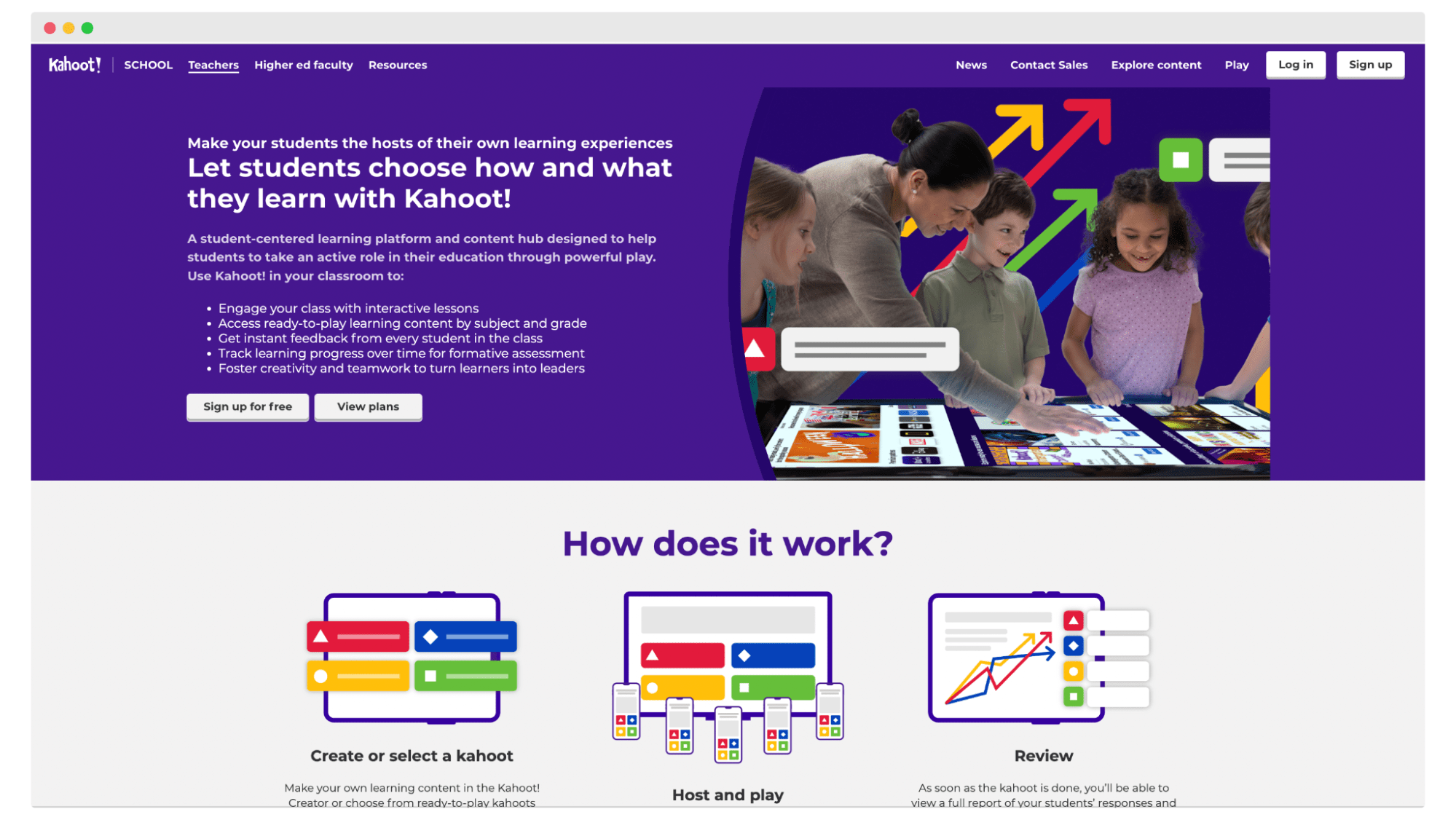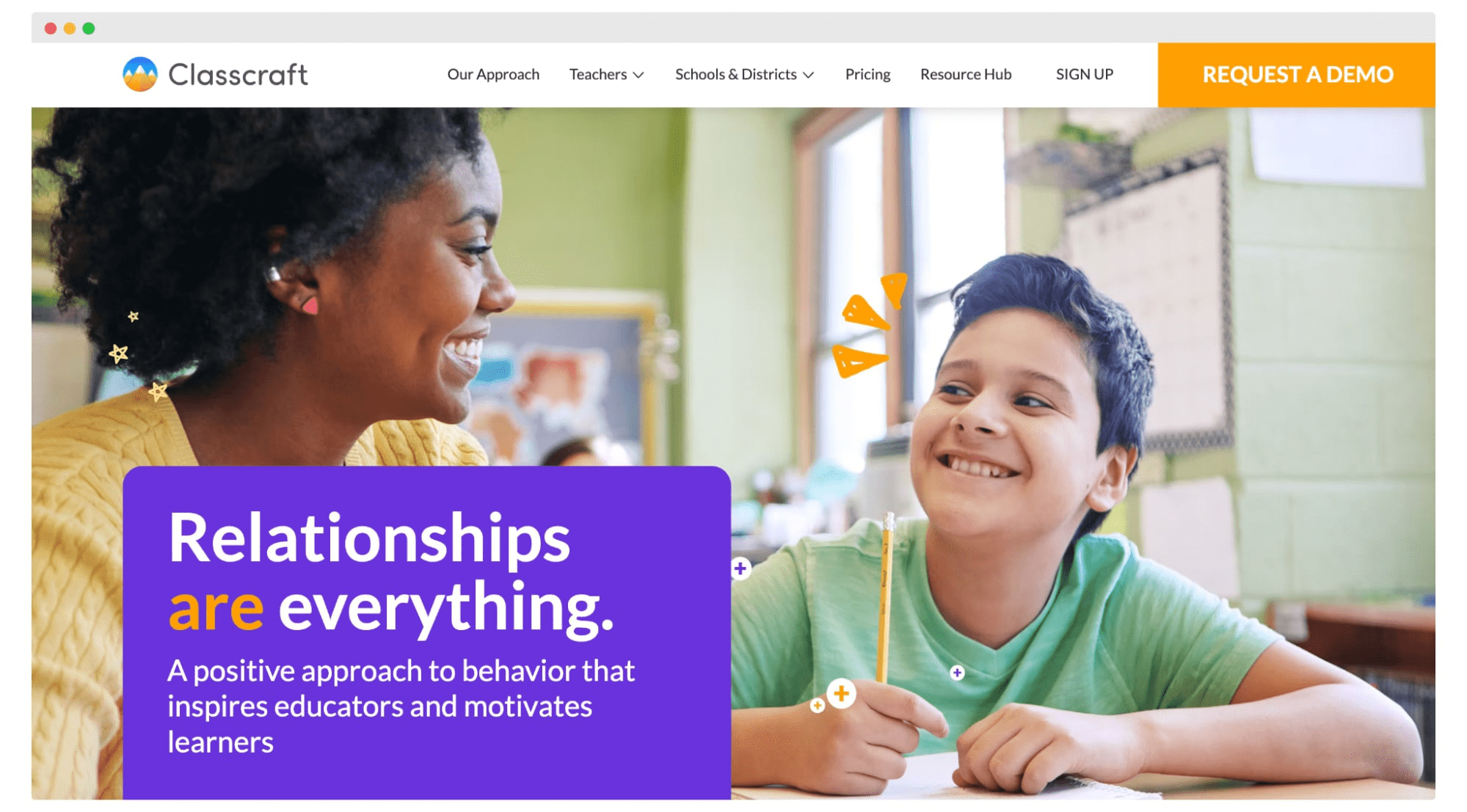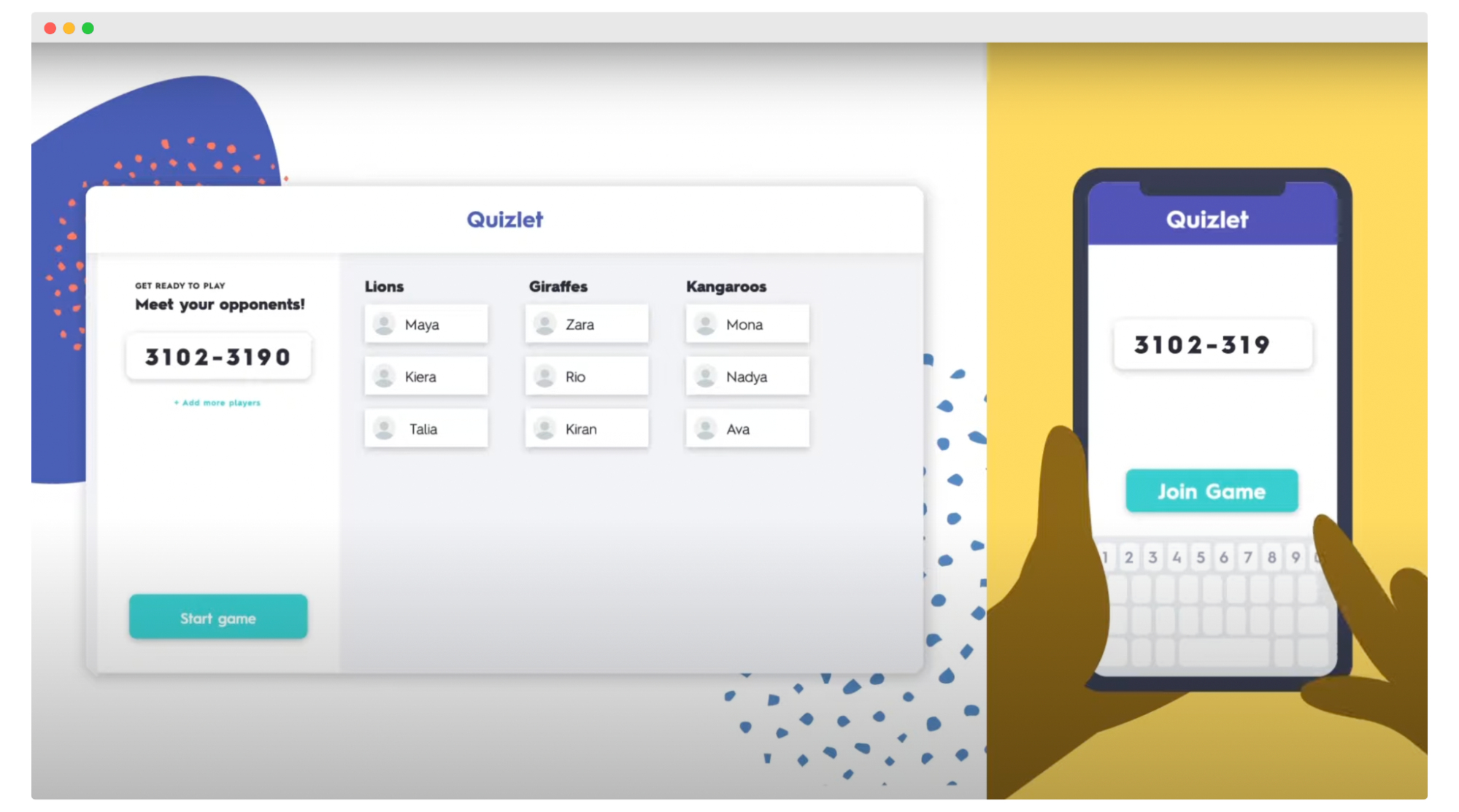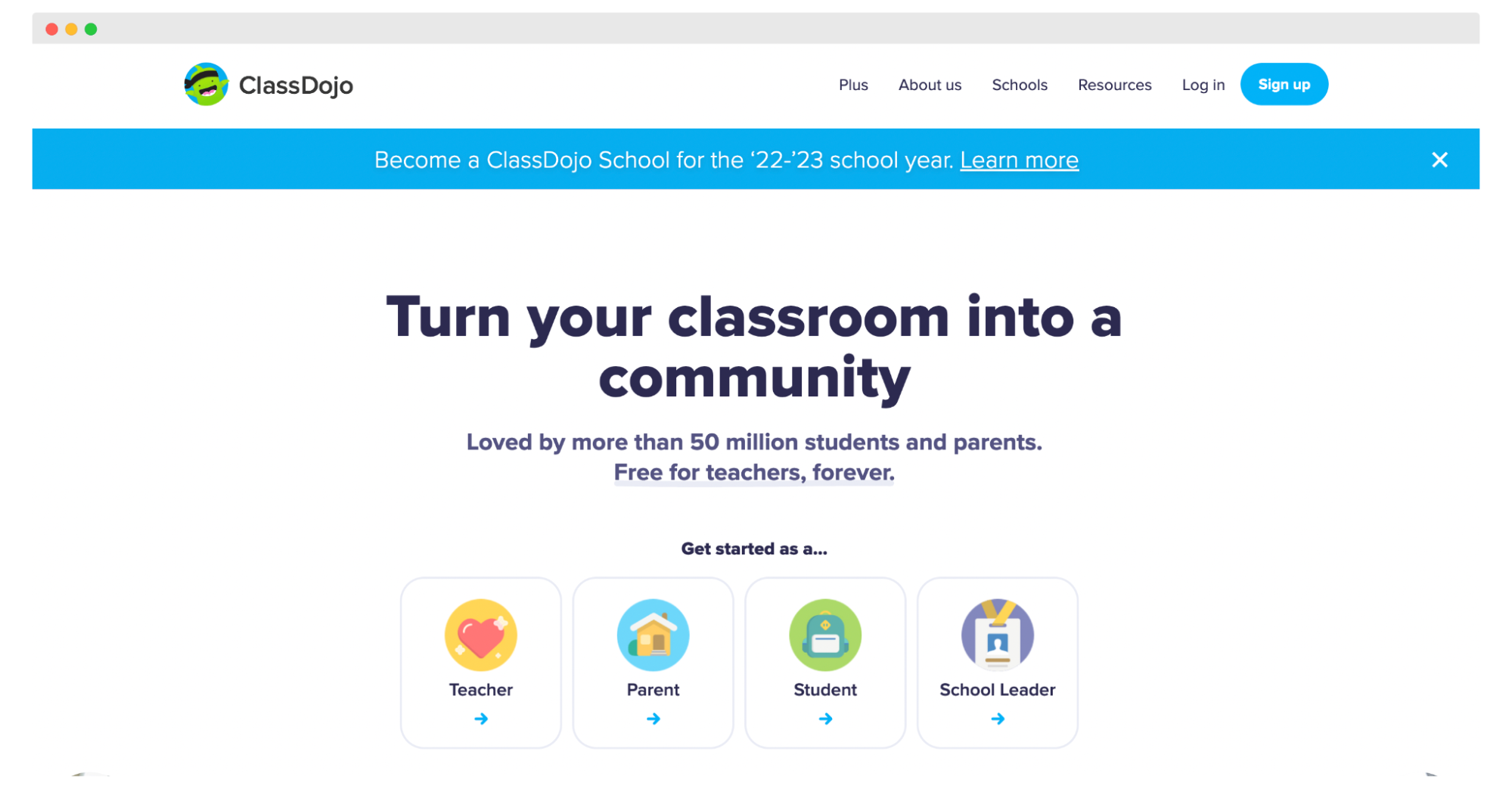Trusted by:
Updated: June 24, 2025
15 min read
Gamification in Education: Improves Learning for These 5 Reasons [+ Tips and Tools]
What advantages can you gain from gamification in education? You won't believe how many there are. Get all the tips you need to make your classroom lessons fun. Read on.
When most people think of the term gamification, they probably imagine video games.
But this concept can be successfully used for another purpose as well – to improve learning outcomes.
Gamification in education is a popular way to engage students and find their full potential, whether through traditional class activities or online courses.
Let’s spark students’ creativity with fun! ✨
What is gamification?
The definition of gamification, in essence: gamification is a process of turning activities into games to make them more engaging and entertaining.
In an educational context, it’s when teachers or educators use game elements in their learning materials so that students can learn and have fun at the same time.

It includes many benefits, from increasing intrinsic and extrinsic motivators and learner engagement to improving communication, collaboration, problem-solving, and critical thinking.
So all attributes that you certainly want to pass along to your students so that they can grow into successful individuals.
But are gamified courses really worth the effort? Clearly, they are.
How can gamification help in education?
Gamification's benefits are undeniable. 87% of teachers found that incorporating purposeful play into their lessons engaged their students more. And over 1/3 of them are already using it daily.
Let's explore the benefits of gamification in your classroom further.
#1 Improves student engagement
Gamification gives students incentives to stay engaged. Teachers can use leaderboards, points, badges, and rewards as ways to maintain student interest while they're learning new material and acquiring essential knowledge.
With these incentives, the combination of learning and playing becomes the perfect recipe for success and getting empirical evidence!
#2 Makes learning more fun
By introducing learning game elements into the classroom, students are exposed to a different type of learning environment that is less intimidating and more comfortable. This can lead to increased extrinsic motivation and enthusiasm as well as better learner performance.
Kindergarten children, for example, absorb knowledge unconsciously through the games their teachers prepare for them. A similar impact of gamification can be successfully used in the later phases of education.
#3 Enhances collaboration and teamwork
The gamified environment encourages students to work together, fostering collaboration and teamwork. Throughout the gamification features, they will measure their progress in tangible ways to find out how they are contributing to the overall success of their peers.

As a bonus, it helps to create a sense of community within the classroom. By giving students the opportunity to work together to earn rewards through collaborative activities, schools are tapping into a powerful fuel source for learning – the motivation that comes with competition and cooperation.
#4 Motivates student
55% of teachers agree that using digital games in class motivates low-performing students.
Incentives, especially those provided through gamification, can be effective in motivating students to learn. By providing students with rewards for completing tasks and mastering skills, teachers are able to keep their classes exciting and engaging. And gamification of education diversifies the lessons – it’s not only about tests or assignments anymore!
#5 Streamlines the teaching process
Game-based learning approach helps students learn and retain more material effectively. It encourages them to practice, review and gain a deeper understanding of the subject matter, as well as increase their confidence in it.
Plus, educational games are an effective way to teach difficult concepts in a way that doesn't overwhelm them 🤓.
Game design principles on how to implement gamification in your own classroom
The application of gamification doesn't have to be complicated or intimidating! With a little creativity and strategic planning, you can create engaging lessons that are sure to make an impact on how your students learn.
Here are some of the key game design elements.
🎨 Make use of the certificate creator
Using certificates is an excellent way to gamify your classroom. Think of it as a reward system for good work!
Here’s the plan: award students certificates to recognize their efforts and achievements throughout the school year. Load up on fun designs, playful language, and quirky graphics to really get your students engaged.
To create certificates easily, you will need no more than Certifier. The platform comes with a library of templates, elements, and things you need to create outstanding certificates. You can customize it to your needs as much as you want to and send them automatically to all the recipients.
Take a look at how beautiful they can be!

[Get more free certificate templates here]
You'll be giving your students visual reminders of their successes in the classroom that comes with an extra sprinkle of success-driven intrinsic motivation for tackling new tasks with gusto.
Learn more about online certificates for schools ➡️ Online Test Certificates: A Guide for Teachers [+ Free Templates]
🎰 Choose the right game mechanics
When it comes to effectively implementing game-like elements in your classroom, choosing the right game mechanics is absolutely essential.
Take a step back and consider what kind of goals you want to achieve and how they should manifest when students are playing. Make sure you spend enough time researching game mechanics (as well as non-game contexts) that can be easily integrated into existing activities.
Consider investing in some off-the-shelf games with interesting computer games feature that could also be adapted. Or, you can create your own based on classic game principles such as role-playing, action, simulation, and adventure. The sky is the limit here.
🔁 Incorporate feedback loops
A feedback loop is simply a way of providing students with a systematic review of their progress and how they’re doing in relation to their goals. This information can help motivate students to keep working hard and help them see the increasing progress indicators.
This technique also helps to make classroom activities more enjoyable as students attempt to progress bars on different levels.
Think about dividing the process into smaller steps so that the students can see the progress faster and don’t get discouraged.
👩🏼🔬 Experiment
Effective learning through the concept of gamification is a great way to connect a different combination of game elements. What does it mean exactly?
It means that you should experiment and try different configurations of gamification on students. Combine online learning with traditional one. Give your students access to a learning platform (gamified e-learning model) so that they will have a big picture of their performance.
Pay attention to what works and what doesn’t. Take the time to observe, analyze, and adjust your gamification strategy as needed.
🤸🏼♀️ Be flexible
Things won’t always go according to plan, and that’s OK!
The important thing is that you’re willing to adjust elements of games as needed and continue trying new things until you find what works best for your students. Remember that every class is different, and each group of kids will likely react differently when presented with gamified subjects.
So don't be afraid to change your plans spontaneously based on the reaction of some skeptical guests.
In short, if you want to incorporate games effectively into your teaching practice, don't be afraid to think outside the box.
🪁 Make it fun!
And last but not least – have a blast making games for the lessons. It's a key gamification principle.
Ask yourself: “What makes my students tick?” Identify interesting challenges (perhaps from existing course content) that could benefit from a more game-like approach and make it fun.
If you enjoy the gamified activities that you come up with, your students will also do.
With these tips in mind, you'll be well on your way to masterfully bringing gamification into your classroom!
Tools for gamification in education
Do you feel overwhelmed by your new role as a game creator? Even without gamified experience, you can still successfully implement combinations of game elements in your classroom to enhance positive effects on the educational environments of your students. Check out these tools!
Kahoot!

Source: kahoot.it
One of the most popular gamified education tools is Kahoot, a platform that allows teachers to create their own multiple-choice quizzes and polls.
Students are then able to answer questions in real-time on their devices while teachers can track progress and award points to those who get the correct answers. It’s perfect for revising course material and reinforcing key concepts.
Classcraft

Source: classcraft.com
Classcraft is a gamified platform designed to motivate students and make them more engaged with their studies. It offers a number of game-like elements, including customizable avatars, leaderboards, missions, and rewards.
Teachers can assign tasks to individual students or teams and track progress as they advance through the game levels. A must-have for boosting motivation and collaboration.
Quizlet Live

Source: youtube.com/@quizlet
Quizlet is an online learning resource that has been around since 2005. It recently launched Quizlet Live, an engaging game-style quiz with up to six teams competing against each other to answer questions correctly (a feature that sets it apart from Kahoot).
Players can earn points and level up as they answer questions correctly, which makes it great for testing comprehension of new material.
ClassDojo

Source: classdojo.com
ClassDojo is a classroom communication and reward system that encourages positive behavior in students. Teachers can give out points to students when they demonstrate good behavior or complete tasks, and the points are displayed in real-time on the big screen in class.
It helps to create a more positive atmosphere in the classroom and makes learning even more enjoyable.
How will the future of eLearning look? Learn more here ➡️ eLearning Automation: The Future of Learning Is Here
Can Certifier help you gamify even more?
With Certifier in your hand, the answer is – absolutely!
It is the ideal solution for taking things further, such as making certificates for winners after the Kahoot game.

It’s also an ideal tool for gamifying education by creating certificates and badges. It gives teachers and students an exciting, interactive environment to create rewards.
Alongside this, Certifier gives teachers access to a massive range of ready-made certificate templates which can easily be adapted and customized to their needs (the editor is super easy to use).
And let's not forget the most crucial part – certificates help motivate and incentivize hands-on learning! So if you want to turn your classroom into an interactive playground, get your hands on Certifier – kids will love it.
➡️ [Start creating certificates for your students today]
To sum all up
Gamification elements in education are no game; instead, they’re serious game changers!
Fueled by an overwhelming surge in technology and increased competitiveness among students, even simple game elements have emerged as a powerful tool to teach new concepts. It has the potential to transform how your students learn and makes the learning process more enjoyable.
So, whether you’re looking for a captivating way to engage your students or aiming to lighten up the challenge of mastering complex topics – gamification promises brighter results 🚀.
Now's the time to join Certifier and create certificates for your students. Start design for free!

- SaaS Growth
- Digital Credentials
- APIs
- Product Marketing
- Company Operations
CEO and Co-Founder
Sergey is CEO and Co-Founder of Certifier, a Forbes 30 Under 30 honoree building digital credential infrastructure for 2,000+ organizations worldwide and shaping the future of credentialing.
![Gamification in Education: Improves Learning for These 5 Reasons [+ Tips and Tools] cover image Gamification in Education: Improves Learning for These 5 Reasons [+ Tips and Tools] cover image](/_next/image?url=https%3A%2F%2Fres.cloudinary.com%2Fcertifier%2Fimage%2Fupload%2Fv1706206083%2Fgamification_ff1e4622b6.png&w=3840&q=100)